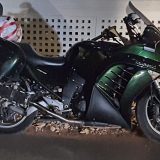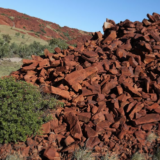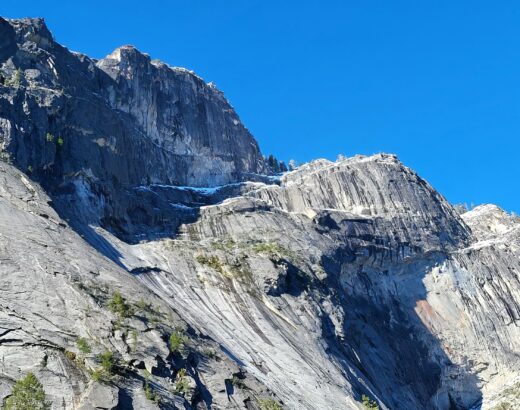yardie creek road
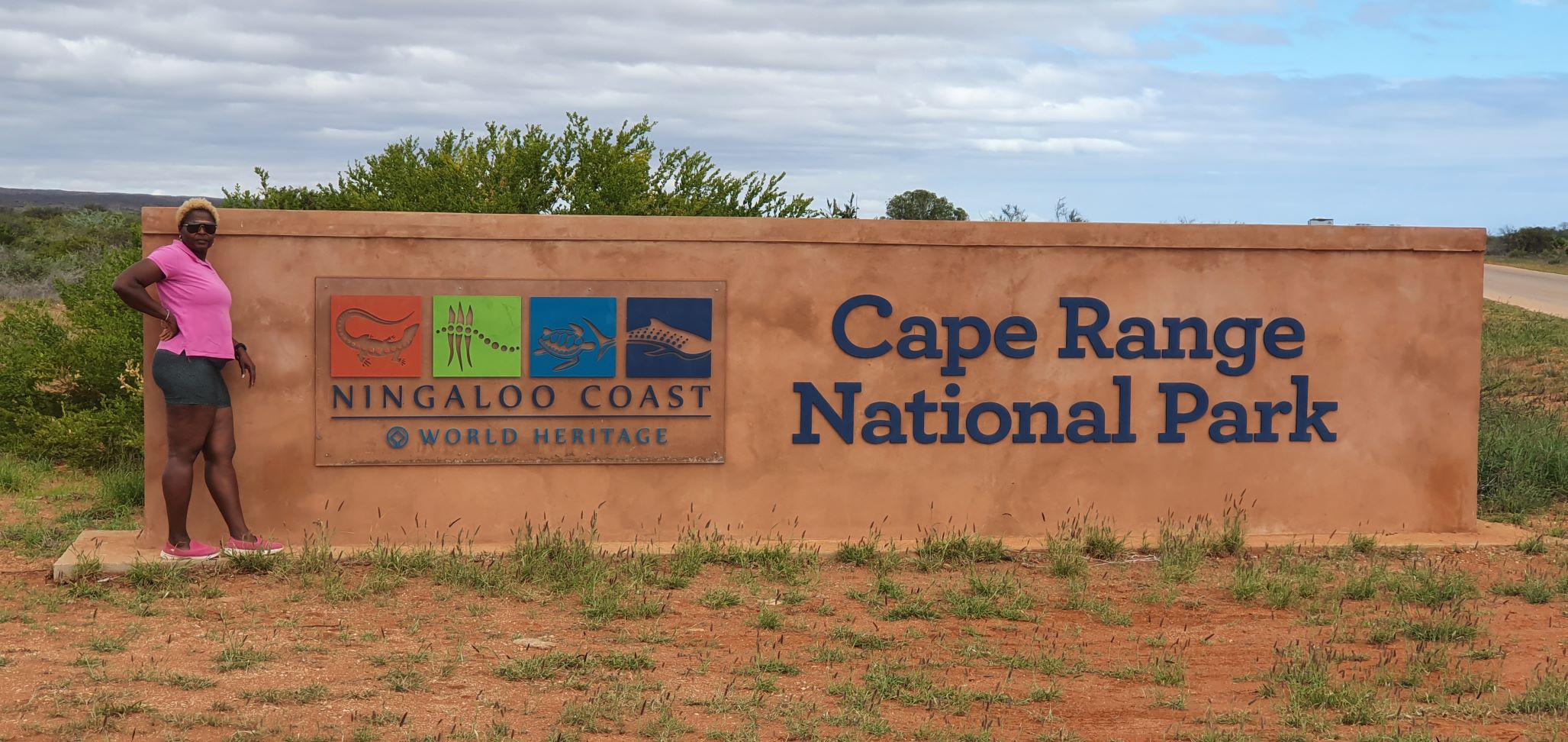
Visiting the Cape Range National Park, one has to get on the Murat Road in Exmouth, heading towards the 13 VLF towers. Just a little before reaching the towers, a complete no-go area for civilians, the branch off on the left is the Yardie Creek Road. Its alternatively referred to as the Lighthouse Scenic Drive and this is where the tourist is rewarded with breathtaking views of the North West Cape, the reward reaching a crescendo at Vlamingh Head, as one drives up the hill seeing the lighthouse on top and the bay below.
However, just before reaching here is the Mauritius Beach, a favourite spot for locals because of its low waves and easily assessable sandy shores. When we visited, being early in the day, there were not many people there. In fact, only three vehicles were at the car lot. That is as fine as it gets. If you are easily offended, you may skip this beach from your itinerary. What you don’t get told is that it is a nudist beach and seeing bare naked bodies come along with the package of visiting here. Clothing is optional here.
With over 1400 ship wrecks recorded on the West Australian coast, it was no wonder that lighthouses are important here. The coastline is long and difficult to navigate and have very few natural harbours. Add to this the long cyclone seasons rendering sea transportation hazardous and many harbours ineffectual in providing a safe haven. These represent the perfect mixture of circumstances for ship wrecks. One notable wreck is that of the SS Mildura, a cattle steamer. It wrecked here in 1907 during a cyclone. Don’t think you are going to see the ship, its parts have been salvaged and what you’ll see in the distance is just some skeletal brownish object, 80m away from land.
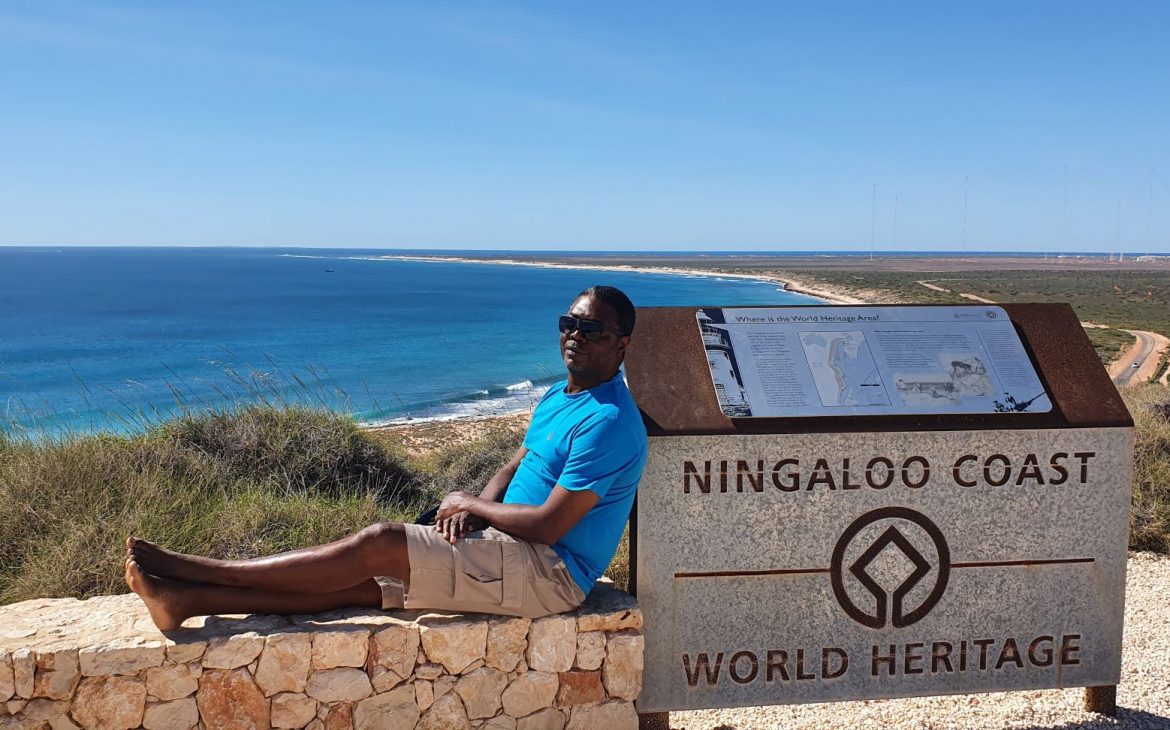
At the bottom of the hill stood a pretty caravan park with a fuel station. We had planned we would be spending the night here, if we had not gotten an accommodation space last night. Camping spots are very limited within the Cape Range National Park, requiring bookings month ahead. For those who are unable to get a spot at the park, this is the next best alternative. The closeness to the ocean and the impressive lighthouse standing tall above it, on the hill, provides a great hideaway and escape for many.
One cannot miss the lighthouse. Vlamingh Head juts out towards the bay around which the Yardie Creek road curves like a snake. The name, Vlamingh, doesn’t sound to have had an Anglo-Saxon origin and it does not. Willem de Vlamingh, after whom the lighthouse is named, was a Dutch sailor who in the last years of the 17th century charted this area. The wreckage of the SS Mildura here was a key reason for the lighthouse being constructed in 1912 and it is said that the light could be seen for up to 41kms away, when it was in operation between then and 1969. The lighthouse itself is closed to visitors but one can walk round it and read well inscribed description about its construction, operation and the lives of the two families that inhabited this remote location to keep the lighthouse functioning.
From here, we had a panoramic view of the Indian Ocean and Ningaloo Reef sprawling below us for as far as the eyes could see. We could also see the 13 VLF masts clearly and read the stories relating to their constructions. Some other visitors we met at the lighthouse, drew our attention to the sight of a whale in the ocean a far distance from us. With the binoculars, the sight became much clearer, we could see the mammal diving into the waters and surfacing. It’s got a big real estate in which to play.
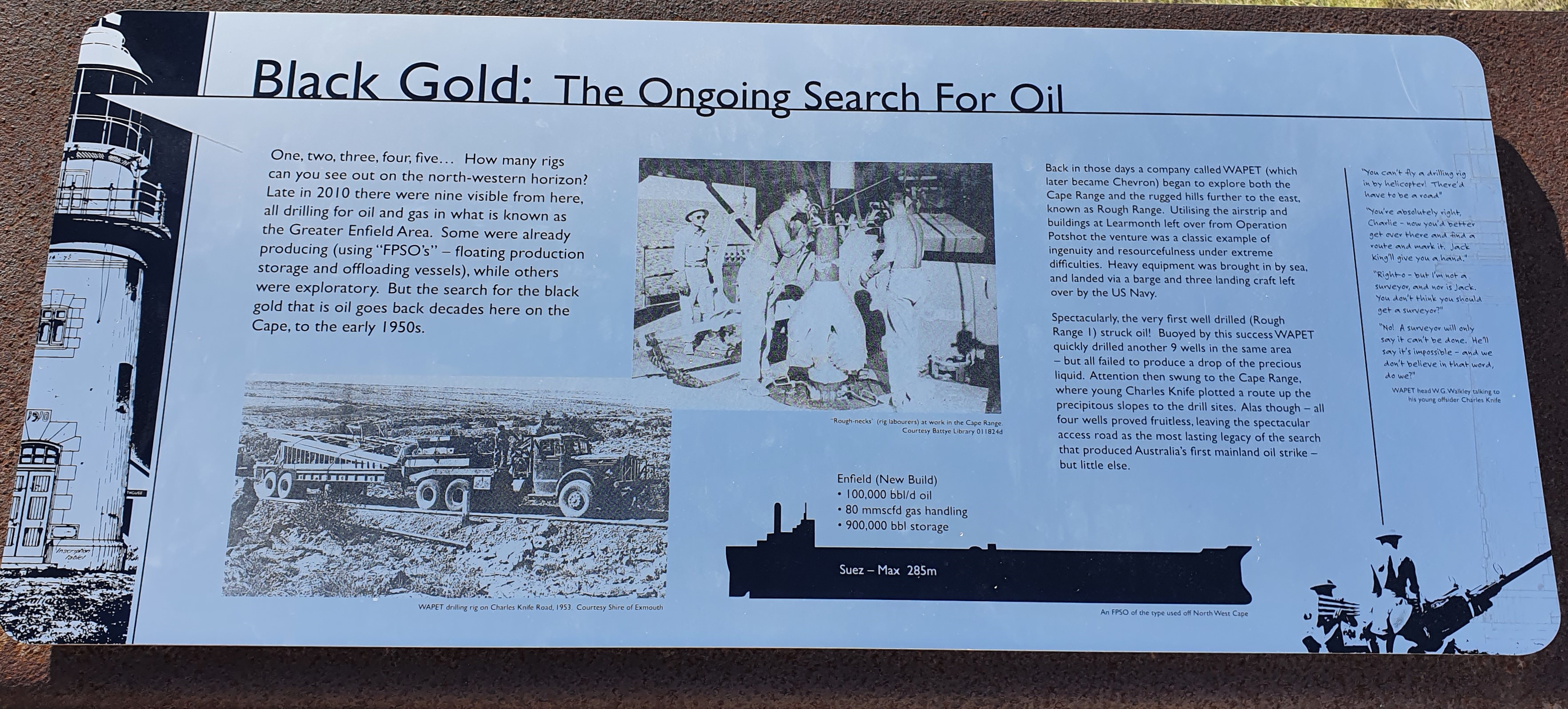
The long history of West Australia Petroleum (WAPET) is well documented in one of the stands here, it started with finding oil in non-commercial quantities. We were encouraged to look into the horizon (the Greater Enfield Area) and count the number of oil rigs. We did and saw none. This contrasts sharply with the nine that is said to have been visible from this same area in late 2010. This is understandable given the global fall in demand for and prices of oil which has been the story since the late 2013.
Apart from oil, this area is notable for being a gun battery and radar station during World War II. The only things that attest to this history are the original sandbags which are cordoned off from being touched so as to continue to keep them preserved. There is also a reconstructed steel structure similar to the one that held the radar station during the war.
The national park is a short drive from here. There is an entrance fee payable based on an honour system. No attendant is stationed here to collect the fee. All that is in place are a booth, envelopes to put the fee in and complete with the vehicle details. If you choose to, you can drive into the park without paying and risk the ranger issuing you a hefty fine. I concluded that this was a brilliant system through which the government reduces the cost of collection of revenues.
All the beaches are on the right side of the Yardie creek road while the gorges and trails are on the left, on the cape mountain range. Even the uninterested individual will be impressed with the sheer beauty of the vivid red colour of the mountain range interspersed by the ash green vegetation contrasts perfectly with the blue colour of the Indian Ocean.
Being a Marine protected environment, there are only few places for fishing but snorkelling can be done in nearly all the beaches. Turquoise beach, known as one of Australia’s best beaches, lies within this park and had been pointed out to us as a must visit for snorkelling and swimming. But we had no snorkel gear and made our way to the Visitors Centre to rent one. Here we were to experience how easy the Covid19 virus can spread, theoretically. I had to try a few flippers on and found none a perfect fit for me. Thereafter, I made to buy one and again had to try them on and finally abandon the quest as there was no size fitting my needs. In all these, the items were simply returned to the shelves, no cleaning done. I was concerned that such wears are being allowed to be touched by individuals without being sanitized in that process.
38kms away is the Yardie Creek, from where the road derives its name. We didn’t venture this far but for those that do, they will be rewarded with seeing the Yardie Creek flowing in the gorge with the same name made of spectacular sheer cliffs. A boat ride is also available and some have said the sights of seeing the towering cliffs at close range while slowly cruising on the creek is a must do for those that come this far within Western Australia.
With no snorkel, we were back on the road and made for the Mandu Mandu Gorge which lies a little off a dirt road. We have seen Australians affinity to their dogs and cats but nothing about birds, something we were going to experience when we met the bird boy of the gorge. Our attention was drawn to the well beaten, dirt covered vehicle that we parked next to by the squeaking of a bird. We took a look and, sitting pretty on the passenger’s seat, was a bird cage with a parrot inside. The rest of the vehicle was full of various materials that suggests the owner lives out of the vehicle, a life on the road.
As we walked towards the gorge, on the little sandy bush path, we met a group of six Asian kids, all in their twenties or so. Everywhere we had been, the spending power of the Asian tourist has been on display. We haven’t come across African tourists at all. We were soon walking on white pebbles, boulder sizes in some case. They were in the millions and we wondered how these came to be. They are all smooth shaped and suggested their haven been knocked around for decades leading ton their loss of their sharp edges. These are closely packed stones and we can’t see anything else apart from more pebbles beneath them. It was difficult to estimate how thick the pack of pebbles are. Immediately on our right stands the steep rocks of the mountain. The agents of weathering are still at work, breaking it down. In this case, it is the plants that are growing atop of it extending their roots down through the rock and cracking it up in their search for water. The roots are deeply entrenched in the rocks and one will wonder how such soft roots got to penetrate the rock, harden up and crack it. The rock stands no chance and will eventually be broken and fall off, bit by bit.
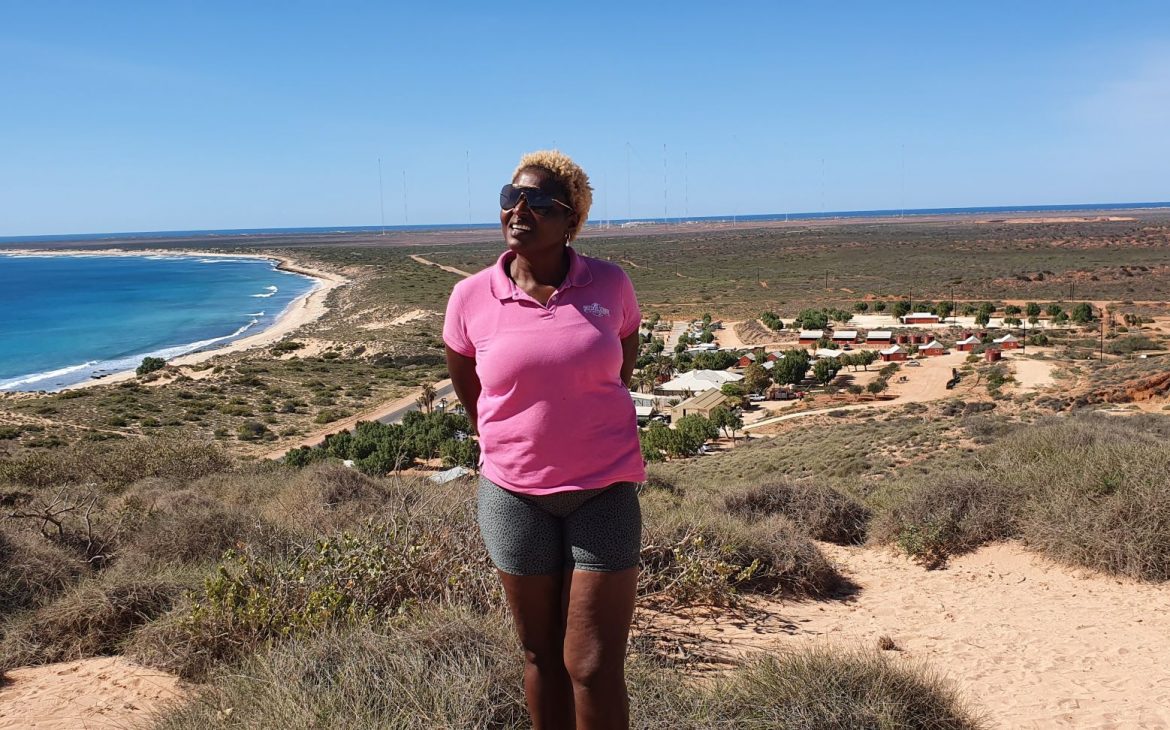
We spotted some wallabies, about four of them. They must have been distracted from their foraging for food by our movement. In a manner similar to an Ostrich burying its head in the sand, they stood still. All their attention were now on us, watching our every move to see what we would do next. Getting back to the car was a little bit arduous but we did, quickly reaching for bottles of water to quench our thirst and rehydrate.
Oyster Stacks snorkelling area was our next point of call and really there was nothing to do here for us. As Africans, though. Without a snorkelling gear, we did not go down to the water to experience the underwater world of marine animals, something that many experienced snorkellers are doing and others are dying to do here. The brochure had encouraged that the reef is a great world of marine animals and coral reef garden that is best explored at high tide. It was high tide and the crowd was here exploring the under-water world.
A few pictures here and there and we headed to Turquoise Bay. We entered the bay area from the southern end and immediately we came across the sign warning of the presence of strong rip currents and a graphical delineation of the area where visitors can safely swim. It was enough to keep the average swimmer away and for others to enter at their own peril. Having witnessed the currents at Bar Beach Lagos sweeping away three young lads in the early eighties with only one of them being recovered, I need no further advise to keep me away from this end of the bay. That event, inscribed in my then youthful heart, a permanent respect for water.
With every step we took, our feet got buried in the sands. The waves were crashing very close to us as we made our way across this area to the safer part of the bay, where the water was calmer. Here we pulled off our top clothes and immediately got into the alluring waters of the bay. It was relaxing and therapeutic. The water was so clean that it was easy to see the little colourful fishes swimming close by. By the time we got out of the water, it was nearly dusk and there were only few other people present at the bay. We towelled up and headed straight for our resort, a distance of 57kms away from us.



